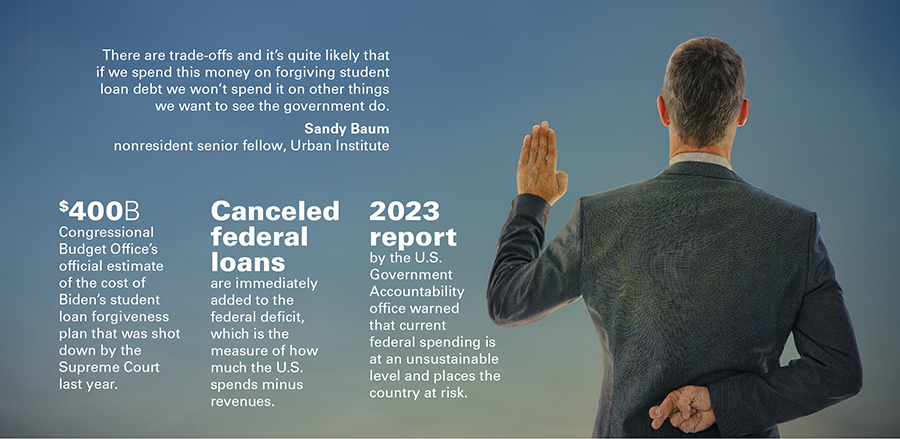The Biden Administration is set to enact another suite of student loan forgiveness, aimed at borrowers who have consistently made loan payments and currently have balances below $12,000.
In January Education Department Secretary Miguel Cardona announced that the department would be fast-tracking a wave of debt relief originally slated for July.
The forgiveness will occur as part of the larger rollout of the new Saving on a Valuable Education (SAVE) plan—an extremely generous loan repayment plan targeted at lower-income borrowers.
The SAVE plan is an income-driven repayment plan, which was introduced in August 2022, aside Biden’s original attempt to forgive up to $20,000 in federal student loans per borrower.
The SAVE plan is significantly more generous than past repayment schemes.
For example, under the REPAYE plan, the most popular income-driven repayment plan before SAVE, borrowers were required to pay 10 percent of their discretionary income, defined as earnings above 150 percent of the federal poverty rate, for at least 20 years to receive forgiveness of their remaining balance.
But under the SAVE plan, borrowers only have to pay 10 percent of their discretionary income, now defined as income above 225 percent of the federal poverty line, for 10 years if their balance is less than $12,000.
The ultimate result of this new plan is that many will end up paying back only a fraction of what they borrowed. According to one estimate, the SAVE plan is expected to cost taxpayers as much as $475 billion over the next decade—in comparison, Biden’s one-time forgiveness proposal was estimated to cost just over $500 billion.
In this newest glut of forgiveness, those who enroll in the SAVE plan, have made payments on their loans—no matter what repayment program they were in—for at least 10 years, and have a balance of less than $12,000 will get forgiveness immediately.
The waves of immediate forgiveness are set to begin in February, but it’s not clear how many borrowers will receive expedited forgiveness, and how much the debt relief will cost. However, with 7 million Americans already enrolled in the SAVE program, immediate forgiveness could likely cost more than $1 billion.
“Our ability to deliver this relief to borrowers months ahead of schedule is a testament to the Biden Administration’s commitment to delivering relief to as many borrowers as possible, as quickly as possible,”
Education Secretary Miguel Cardona said in a press release. “President Biden’s SAVE plan is not only benefitting millions of current borrowers but also providing the students of today and tomorrow with a more affordable pathway to college degrees and credentials.”
While much of the attention on President Biden’s student loan proposals has focused on his attempt to enact sweeping student loan forgiveness, lesser-known introductions like the SAVE program have proved a consistent way to enact smaller-scale forgiveness without attracting legal scrutiny.
While Biden faced defeat at the Supreme Court last year ending hopes of one-time student debt relief for all borrowers, sweeping student loan forgiveness is still happening.
Excerpt Emma Camp, Reason

















